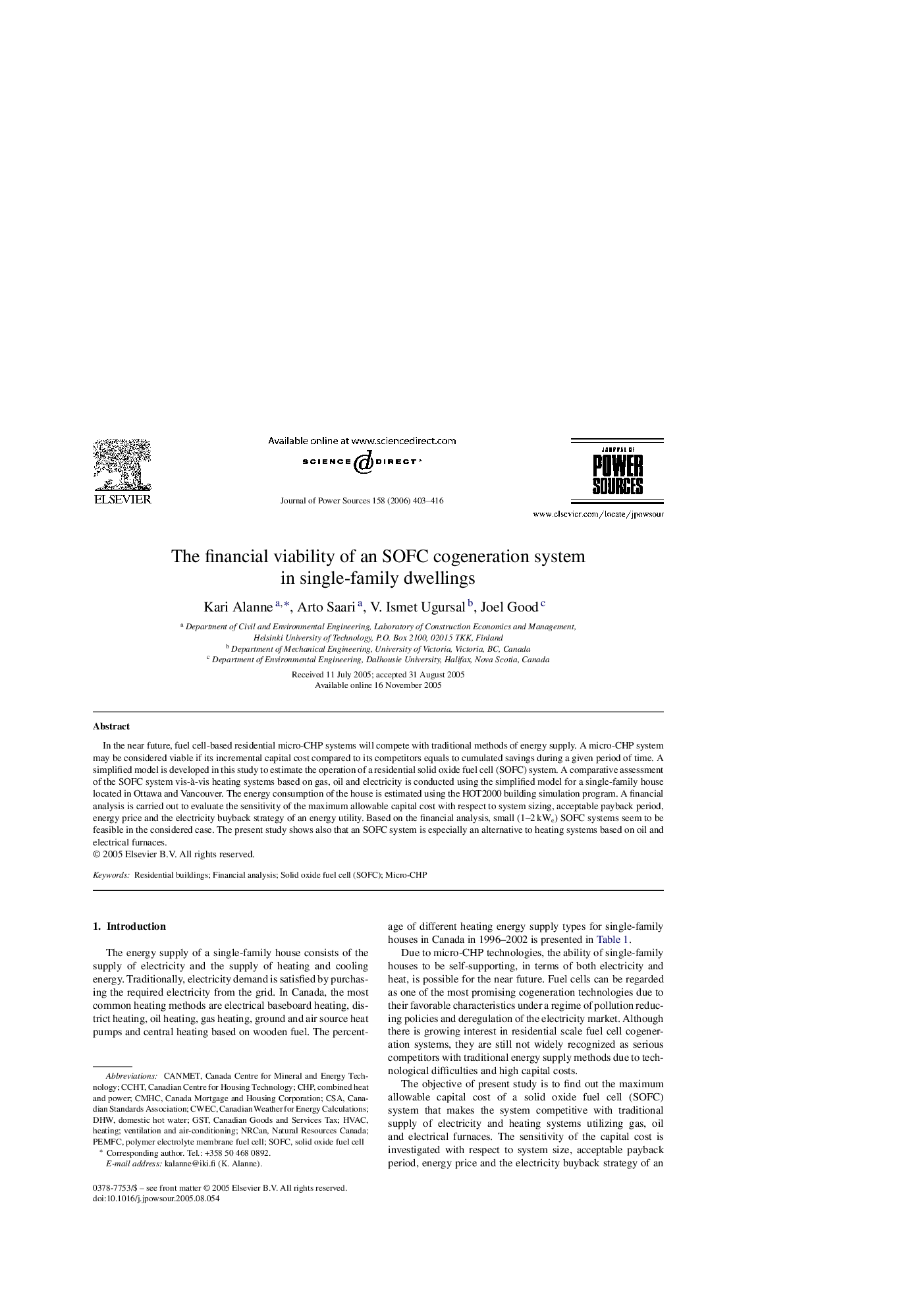| Article ID | Journal | Published Year | Pages | File Type |
|---|---|---|---|---|
| 1287584 | Journal of Power Sources | 2006 | 14 Pages |
In the near future, fuel cell-based residential micro-CHP systems will compete with traditional methods of energy supply. A micro-CHP system may be considered viable if its incremental capital cost compared to its competitors equals to cumulated savings during a given period of time. A simplified model is developed in this study to estimate the operation of a residential solid oxide fuel cell (SOFC) system. A comparative assessment of the SOFC system vis-à-vis heating systems based on gas, oil and electricity is conducted using the simplified model for a single-family house located in Ottawa and Vancouver. The energy consumption of the house is estimated using the HOT2000 building simulation program. A financial analysis is carried out to evaluate the sensitivity of the maximum allowable capital cost with respect to system sizing, acceptable payback period, energy price and the electricity buyback strategy of an energy utility. Based on the financial analysis, small (1–2 kWe) SOFC systems seem to be feasible in the considered case. The present study shows also that an SOFC system is especially an alternative to heating systems based on oil and electrical furnaces.
